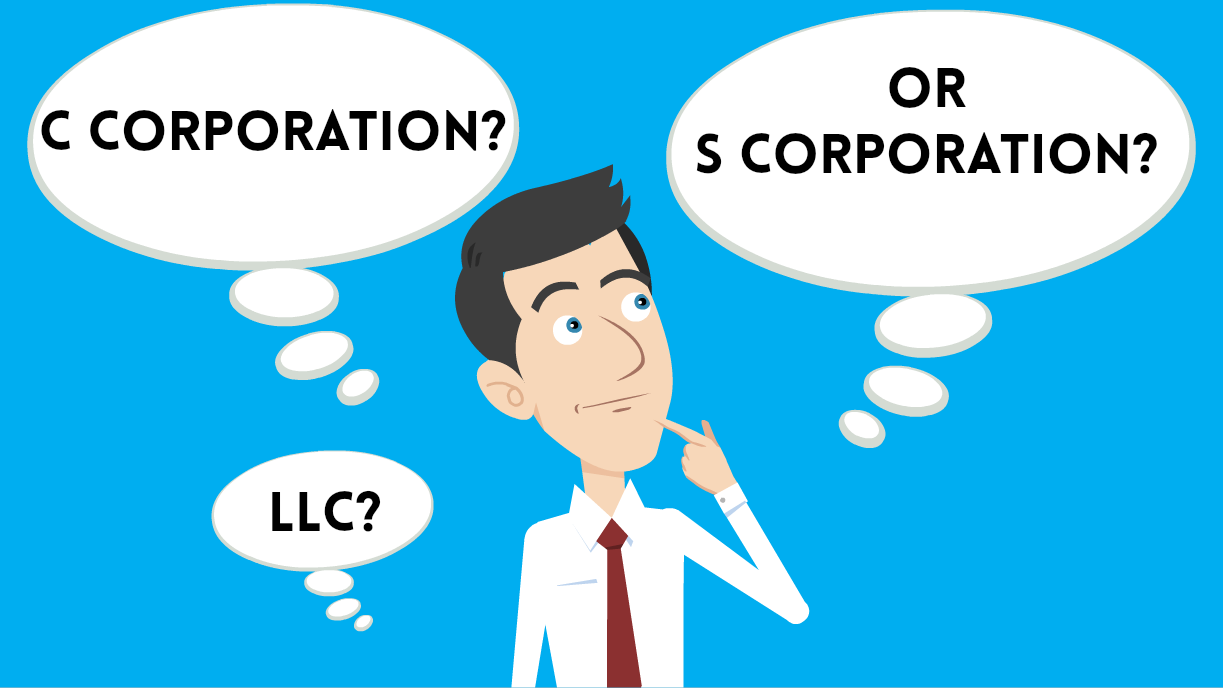Has the recent tax overhaul ushered in a new champion?
Alright, confession out of the gate: that title was written by someone else. Not me. I’m a “girl.” A girl who couldn’t give one, small, tiny, teeny, tinker’s toss about football or the Super Bowl.
Ugh, God! The Super Bowl. Is that the one where all those beefy men pile up on top of each other? And then, a couple of high-priced commercials show up? And finally, you lose your $10 in the office squares pool? If that about sums it up, then there’s the fun, little, Super Bowl theme the firm wanted incorporated into this article. So now that they got their football, we’ll just call the rest of this, “the tax part of the article”……
For general business purposes, corporations appear to have only subtle differences that identify one from another – they all provide shareholders with personal liability protection, voting rights can be discriminative, stock can be sold freely to raise capital, and they have perpetual lifespans as separate entities that do not liquidate or change form upon the death of a shareholder.
The element that draws the boldest line in the sand and forces corporations to pick a lane is…. the ever-influencing, scale-tipping, TAX TREATMENT.
For tax purposes, corporations come in two breeds: “C corporations” (or “regular” corporations) and “S corporations.” This distinction not only determines how much the shareholders truly take away from the business throughout its operating life cycle, but also at the end of investment when shareholders decide to sell their stock. How the company will be taxed is usually the primary factor businesses consider when incorporating.
Historically, C corporations have been unattractive to businesses because of the presence of “double-taxation,” illustrated later in the article. The quick explanation of double-taxation is that a C corporation pays income taxes on its profit at the entity level, before that profit is passed out to the owners. Then, once the profit is distributed to the owners, it is taxed again at the individual level, usually in the form of dividends, taxed at the 15% or 20% capital gain rates.
S corporations do not pay any entity-level tax. Rather, all profit is passed through to the owners and taxed at their individual ordinary income tax rates.
Prior to the sweeping tax reform the Tax Cuts and Jobs Act gave us last December, the trade-off that C corporations received for being taxed twice on the same income was essentially two-fold (fine, two-and-a-half fold)…
#1: C corporations were able to retain up to $50,000 in the business, taxed only at 15% and #2: they were allowed to provide more tax-advantaged fringe benefits to owners.
The “half” related to being able to choose any month yearend, but S corporations can make that happen, too. It’s just more of a procedural hiccup.
Of course, as a corporation’s net profit began to exceed $50,000 under the old law, benefit #1 started to diminish and when a corporation’s profit landed it in the top tax bracket of 35%, the benefit became essentially nonexistent. However…..it’s a new dawn and a new day for corporations.
The tax law changes that began to take effect with the 2018 tax year, eliminate the progressive corporate tax brackets and dramatically reduce the tax rate for C corporations to a flat 21% —> a 14% decrease for most corporate income. This rate reduction significantly lessens the double taxation burden and, absent any concurrent changes to the S corporation provisions, would significantly shift the corporate playing field. Since “big business” (think, publicly traded companies) typically organize as C corporations while small business has historically found the “S” structure to better suit its needs, the reduced corporate income tax rate alone would have put small businesses (already swimming upstream against the Amazons of the world) at a total competitive disadvantage.
Thankfully, we have a Congress full of nurturer-caretakers who very thoughtfully said, “We’ve got to gift something to the S corporation crowd, too.” That “gift” was Section 199A.
This Section is completely new. If you’ve been a tax adviser for the last 30 years, you’re on the same page as a kid of out college. There are new definitions, if’s-then’s, phase-outs, limitations, thresholds, and if S corporations can make it through all of it and navigate the hurdles just right, their reward is a 20% deduction against business income.
We’re not going to get into the mechanics of the 20% deduction in this article. The point of the mention is simply to acknowledge that the tax advantage that S corporations had over C corporations under old law is more or less still the same.
So, how do the numbers fall into place?
First, it’s not a one-analysis-fits-all answer. The 20% deduction places different limitations on service businesses vs. non-service businesses. (Service businesses being, medical, law, accounting, consulting, brokerage, financial services, etc.). Also, different taxable income levels change the comparison even more. For starters, if taxable income is under $157,500 (single) and $315,000 (married), the 20% deduction against business income is fully allowed for the S corporation shareholder. Service businesses and non-service businesses are handled identically under these income levels. Show me the numbers!
This first example assumes a married couple has taxable income under $315,000, and compares the net tax rate on $100,000 of business income.

Notice that if the income is derived from an S corporation, the shareholder pays tax at an effective rate of 19.2% vs. 35.85% if the same income was derived by a C corporation. First score of the game: S corporation 1, C corporation 0.
Next, take a look at what happens with a service business when taxable income creeps up over $415,000 for a married couple; another key threshold of the §199A 20% deduction.

Because the S corporation shareholder was completely phased-out of the deduction, the difference in effective tax rate on the corporate income is almost nothing. But, since this IS a competition and winning is obviously all that matters, we have to give the point….. S corporation 2, C corporation 0.
Here’s a very similar example, except taxable income exceeds the 20% deduction phase-out, and is over the capital gains breakpoint of $479,000, which now forces the C corporation dividend to be taxed at 20% (vs. the lower 15%), but the couple is still in the 35% individual bracket having taxable income under $600,000.

The C corporation still can’t catch the S corporation. It’s 3 to 0 and this is getting downright embarrassing! (If the taxpayers’ taxable income exceed $600,000, they would have been in the 37% bracket and the S corporation would still be a better structure.)
Finally, an example of a non-service business. There are other components to the 20% Qualified Business Income deduction that include the wages paid by the business as well as its assets. In keeping this example clean, we’re going to assume that the full 20% deduction from business income applies and since this is NOT a service business, it is fully deductible (not phased out).

Once again, the S corporation yields a better effective tax rate. The takeaway with this example is that non-service businesses do not have the same phase-out level that service businesses have, and can always capture some of the 20% deduction if the entity has net profit and pays wages. With S corporations, there is a “reasonable compensation” requirement for the shareholders, so at a minimum there should be some W-2 wages to use in computing the deduction. In other words, the effective tax rate may not be as low as 29.6% as in this example, but it would nonetheless be lower than 39.8%. Which…..if you’re still counting, makes it 4 – 0, in favor of the S corporation.
So, does mean that S corporations are still a better choice for most small businesses? For tax purposes, yes.
However, there are many other reasons to not write off C corporations depending on the type of business, and particularly what the exit plan is. Most small businesses don’t really start with the end in mind – the owner wants the business to provide a living for his or her family, and maybe even at some point pass it down. In some instances, though, the need to allow outside investors warrants the need for a C corporation. Also, if there is a sale in mind, C corporations have some of the most taxpayer-friendly rules in terms of excluding gain that are just not available to other entities.
The result of the Tax Cuts and Jobs Act definitely gave us different ways of looking at these longstanding stalwarts of the business world. While the tax disparity between C corporations and S corporations was designed to be relatively consistent with prior law, start-up companies have the same challenge in determining what the best structure is for the overall business purpose. As for existing businesses, it is always worth taking inventory as to whether the current structure is still the best structure when considering company specifics. Your accountant can always help in making that determination and advise if a different tax structure fits better with changing goals.
One last thing….for all of you who had bets on the S corporation, make sure you tell your accountant about gambling winnings – those are still taxable!









